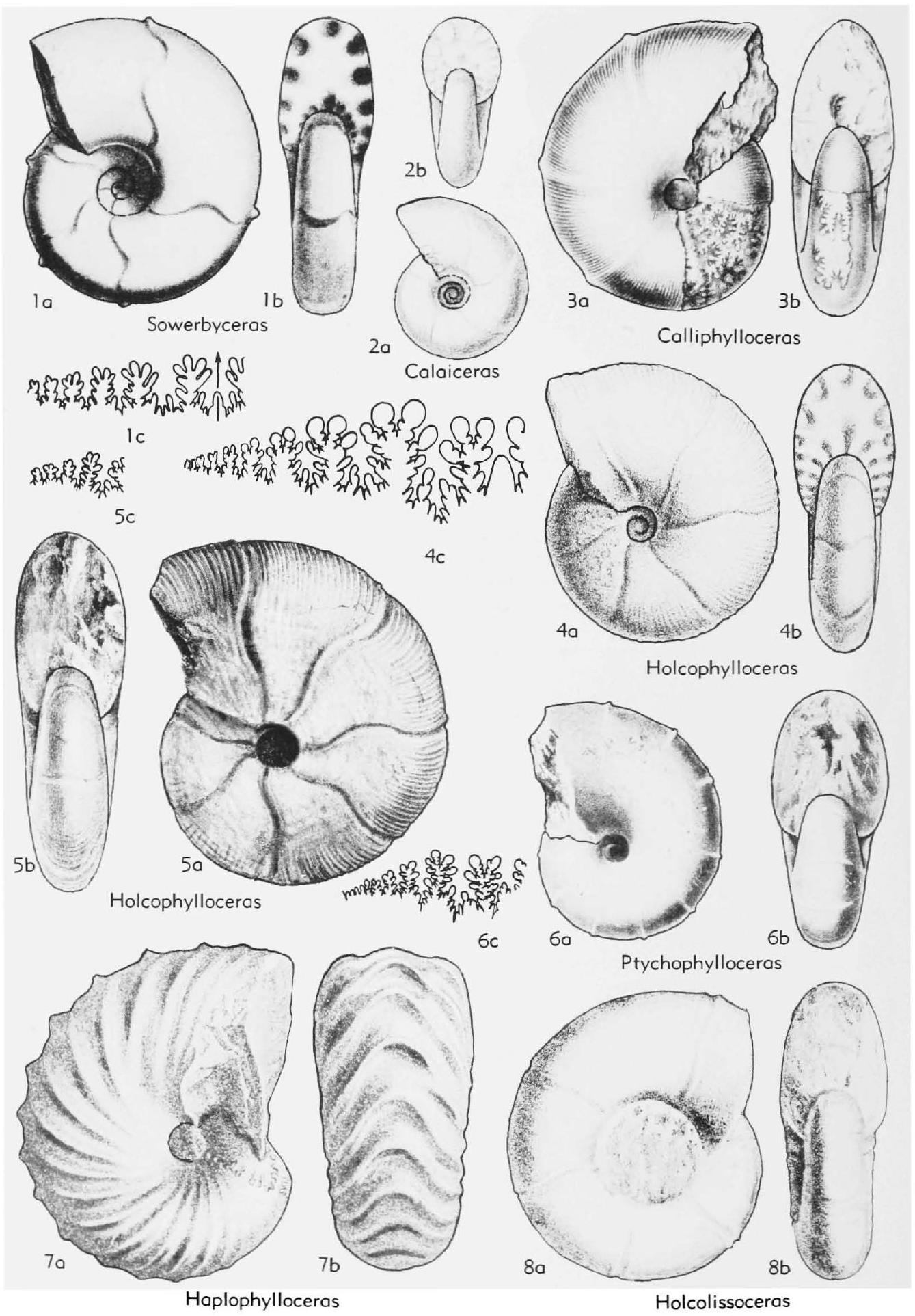Welcome to the Treatise on Invertebrate Paleontology!
Please enter a genera name to retrieve more information.

Haplophylloceras
Classification
Phylum:
Mollusca
Class:
Cephalopoda
Subclass:
Ammonoidea
Order:
Ceratitida
Suborder:
Phylloceratina
Superfamily:
Phyllocerataceae
Family:
Phylloceratidae
Subfamily:
Calliphylloceratinae
Formal Genus Name and Reference:
Haplophylloceras SPATH, 1925
Type Species:
Phylloceras strigile Blanford in UHLIG, 1903
Images
(Click to enlarge in a new window)
Fig. 220,7. *H. strigile (Blanford), Spiti sh., 7a,b, x1 (533*)
Synonyms
Geographic Distribution
India, Indon., N. Guinea
Age Range
Beginning Stage in Treatise Usage:
Jur. or Cret.
Beginning International Stage:
Hettangian
Fraction Up In Beginning Stage:
0
Beginning Date:
201.36
Ending Stage in Treatise Usage:
Jur. or Cret.
Ending International Stage:
Maastrichtian
Fraction Up In Ending Stage:
100
Ending Date:
66.04
Description
Inner whorls smooth, venter rounded, outer whorl developing flattened venter and large foldlike ribs which strengthen and sharpen in approaching venter, projected as they cross it, umbilical slope gentle. Sutures with saddle endings tending to lose phylloid form and become multifid.
References
Spath, L. F., 1925, Ammonites and Aptychi [from Somaliland]: Mon. Hunterian Mus. Univ. Glasgow, v. 1, p. 111-164, pl. 15-16.
Museum or Author Information
Classification
Phylum:
Mollusca
Class:
Cephalopoda
Subclass:
Ammonoidea
Order:
Ceratitida
Suborder:
Phylloceratina
Superfamily:
Phyllocerataceae
Family:
Phylloceratidae
Subfamily:
Calliphylloceratinae
Formal Genus Name and Reference:
Haplophylloceras SPATH, 1925
Type Species:
Phylloceras strigile Blanford in UHLIG, 1903
Images
(Click to enlarge in a new window)
Fig. 220,7. *H. strigile (Blanford), Spiti sh., 7a,b, x1 (533*)
Synonyms
Geographic Distribution
India, Indon., N. Guinea
Age Range
Beginning Stage in Treatise Usage:
Jur. or Cret.
Beginning International Stage:
Hettangian
Fraction Up In Beginning Stage:
0
Beginning Date:
201.36
Ending Stage in Treatise Usage:
Jur. or Cret.
Ending International Stage:
Maastrichtian
Fraction Up In Ending Stage:
100
Ending Date:
66.04
Description
Inner whorls smooth, venter rounded, outer whorl developing flattened venter and large foldlike ribs which strengthen and sharpen in approaching venter, projected as they cross it, umbilical slope gentle. Sutures with saddle endings tending to lose phylloid form and become multifid.
References
Spath, L. F., 1925, Ammonites and Aptychi [from Somaliland]: Mon. Hunterian Mus. Univ. Glasgow, v. 1, p. 111-164, pl. 15-16.
